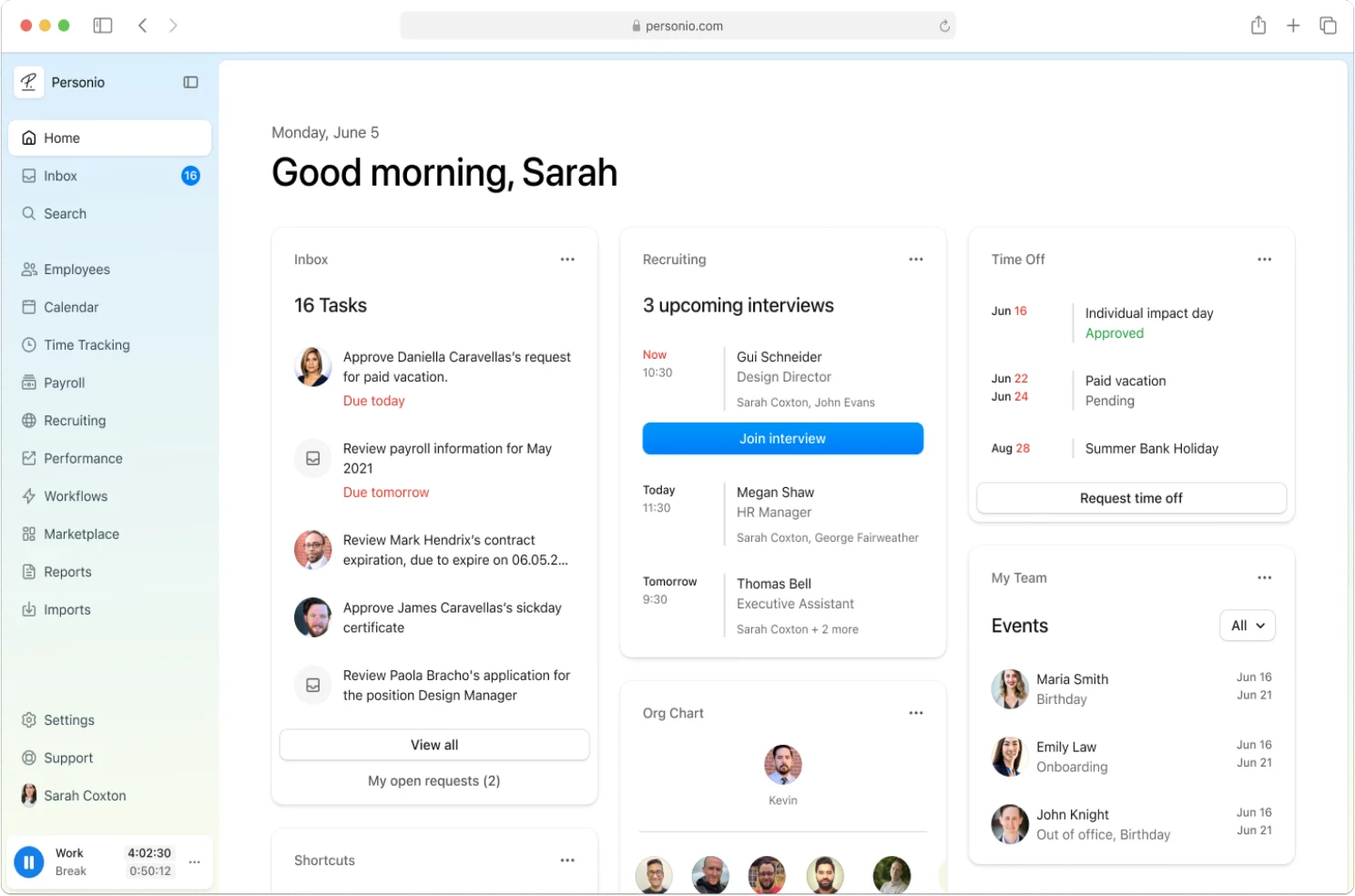What is Full-Time Equivalent (FTE) & How to Easily Calculate It

What does full-time equivalent (FTE) mean? In short, it is a crucial term that is important for HR specialists and accountants alike.
As we cover in this helpful article, there are a wealth of situations in which knowing the meaning of FTE and how to calculate it can be quite useful.
Here's how you can use Personio to run FTE reports instantly.What is full-time equivalent (FTE)?
Full-time equivalent, or FTE, measures the total amount of full-time employees working at any one organisation. It is a way of adding up the hours of full-time, part-time and various other types of employees into measurable 'full-time' units.
Essentially, the FTE is the number of determined full-time positions in an organisation. It is used to count employees depending on their degree of employment.
Being a basic criterion in staff controlling, it is one of the most important staff indicators for companies. Particularly due to the development in the part-time sector, your staff planning will be more comprehensible and controllable with this ratio.
Nowadays, it is also an effective measure of productivity in terms of staff, as the Full-Time Equivalent will allow you to count the entire workforce, including full-time workers, part-time employees and even those hired to work only one day per week.
An example of full-time equivalent at work
Let's say your company considers a full-time workweek to be 40 hours. In your team, you have Jennifer who works 40 hours per week, and you have 3 part-time employees: Daniel, who works 5 hours per week, Nicole, who works 15, and Bobby, who works 20.
Now, Jennifer is a full-time employee, so her FTE is 1.0. Daniel, Nicole and Bobby do not work a full 40 hours a week, and to calculate the Full-Time Equivalent of the hours they work, you must divide each employee’s working hours by the company’s hours for a full-time workweek.
What is the purpose of calculating FTE?
There are companies that have a significant number of people working part-time, i.e., workers who spend only a short time in the company.
What follows are some of the main purposes of calculating your company’s FTE:
To see if the productivity of the company is positively influenced by the increased number of part-time employees
To find out what the total productivity is, based on the real working hours of your staff
To compare your company’s data with your competitors and to find out if their FTE is higher or lower than yours
To plan upcoming projects and the total number of people to be scheduled for these tasks, both full and part-time
How to work out FTE for your company
Calculating staff performance with FTE is very simple. You only need to know two figures: the total actual hours worked and the total hours of the full working day. The first figure refers to the total sum of hours worked by the employee or department to be evaluated. The second corresponds to the total hours performed by full-time employees. Thus, you have the following:
FTE = total actual hours worked / total full-time hours
A practical example of calculating FTE
An electronics company has a production team of five people. Three of them work full-time (40 hours per week respectively) and the rest work 10 and 5 hours in total.
If you want to calculate the FTE, you first need to know how many actual hours have been worked by those five employees. Assuming they strictly complied with their timetable, you have 40 + 40 + 40 + 10 + 5 = 135 effective hours worked. Knowing that the full working week is 40 hours, you can apply the FTE formula:
135 actual hours worked / 40 hours of full-time = 3.37
What does this result mean? Those five workers are in fact equivalent to 3.37 full-time workers.
Summary: How to work out FTE
Find the total hours of part-time employees.
Find the total hours worked by full-time employees.
Add the two values.
Divide the calculated total by the number of hours that a full-time equivalent works.
The underlying period can be, for example, a day, a month or even a year.
The importance of determining FTE
FTE can serve as a parameter for your decision-making as a manager regarding promotions, dismissals, division of tasks, training and talent development.
Through this, you can identify the needs and internal capabilities of your employees more easily, as well as exercise more strategic management.
Determining the FTE of your company is crucial for its productivity. Imagine that, with the same FTE, an employee can deliver 100 units, while another only delivers 30.
In this case, the calculation may show that the first professional is overqualified for the position, whilst the other needs more training and development.
The importance of the FTE also depends on the country your business is operating in. For example, there are several reasons for wage deductions in the UK, and the Full-Time Equivalent can help you determine certain contributing factors such as:
Measuring the impact of unjustified absences
Minimising idle working hours
Evaluating the need for new hires or cuts
An analytics suite you can trust

Personio offers a host of valuable reporting and analytics features, so that you can have access to critical HR KPIs at your fingertips. Find out more or start a free trial today to see how to run reports with Personio's help.

